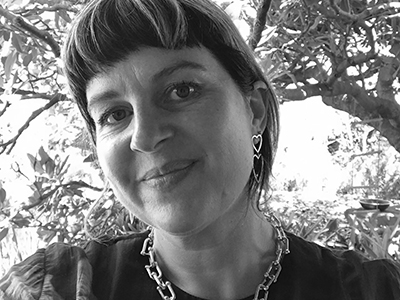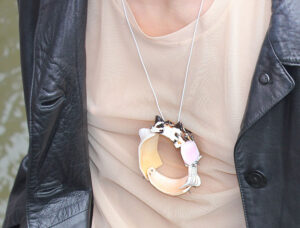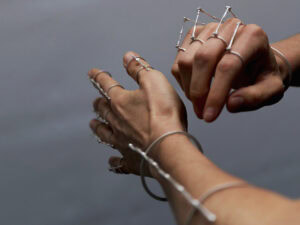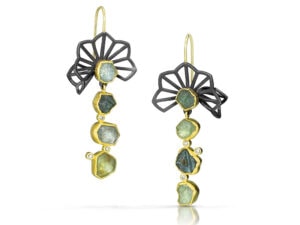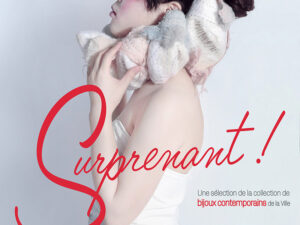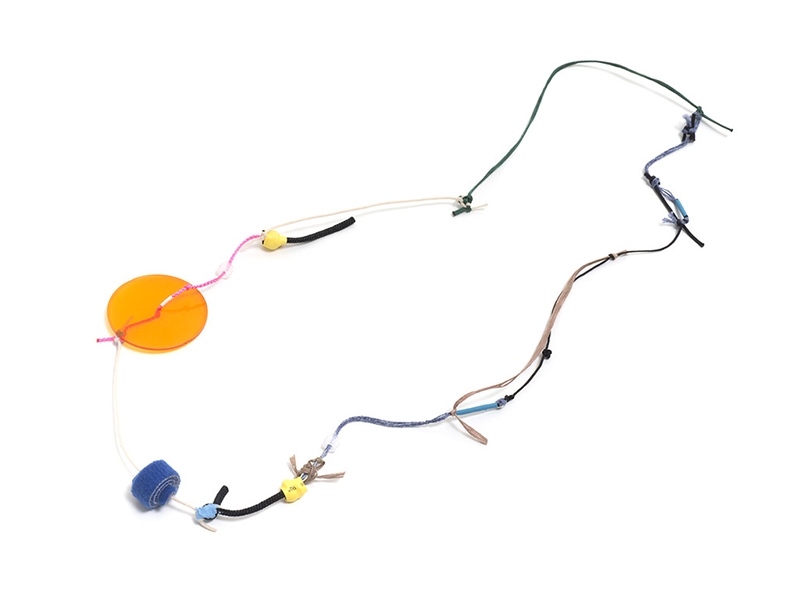
The field of jewelry runs across a network, an array of type and variation as inclusive of the conceptual and dematerialized as it is of overt wearable material displays of wealth and power. It’s a form of haptic knowledge accepted in this field that jewelry when worn (and increasingly when not) is a sort of locator, an identifying object that can inform the wearer and the viewer about the particular qualities of a subject: where you belong, what you stand for, what you don’t.
There are also some objects, both within this field and outside of it, that question the very notion of what is type, genre, or discipline—and others still that do more than that. These objects go beyond the anthropological or even epistemological function of objects and our knowledge of them, to gesture toward other questions, such as, why make objects at all? And what is the point of all this activity, operation, and diversification?
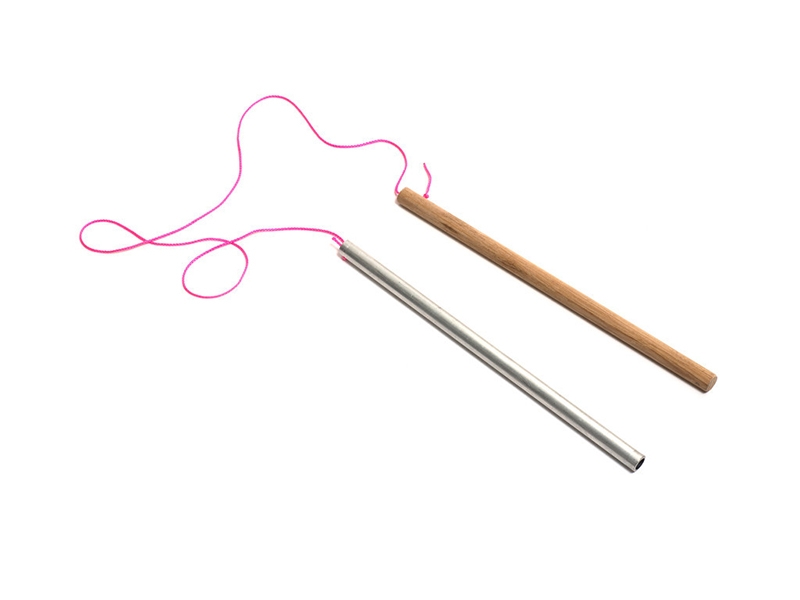
Sometimes when we use the word excess, particularly in relation to jewelry, it has a pejorative inflection meaning a surplus or extravagance. In this way it can be connected to lack of control, or the obverse: restraint through ideas of preciousness, form, or function. That necklace is simply too much, it’s over the top; or, conversely, one piece of jewelry, one of this, or one of that, is more than enough.
In her book Chaos, Territory, Art: Deleuze and the Framing of the Earth (2008), feminist philosopher Elizabeth Grosz explores a position entirely distinct from the vernacular discussion outlined above. Grosz identifies excess, and the force of excess, as biological explication for the desire for creation and the making of things in the natural and human world.[1] Excess as a concept is not merely what is left over, or left without, but an overabundance—a productive excessive force. It is the more than that operates in material and that occurs in objects. She makes her case, in part, using scientific research by Charles Darwin and examples from the natural world.[2] This notion of excess, which results from and resides within sexualized life on earth, becomes productive for its own sake in order to attract and appeal not merely for the purposes of reproduction. These creative impulses are seen as in excess of the needs of mere survival. Excess in this way is both the product of, and impulse toward, specific creative activities undertaken for their own sake.
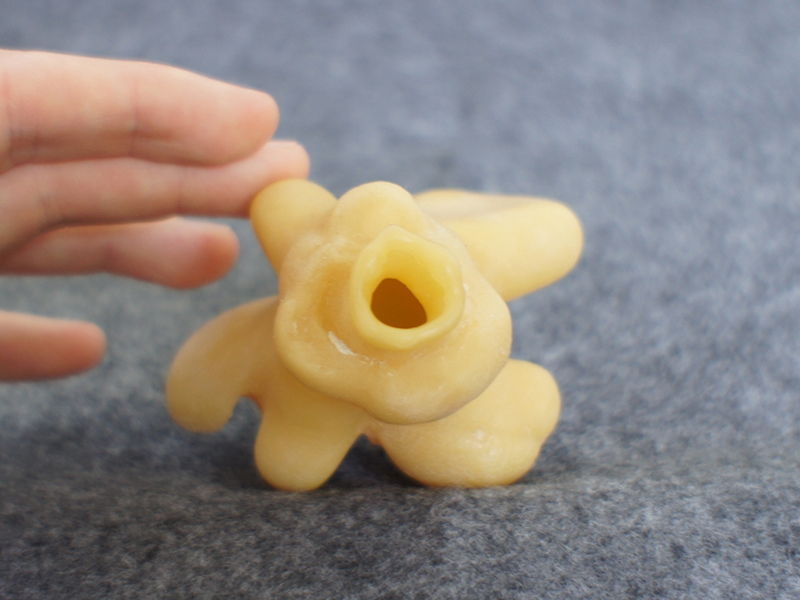
According to Grosz, in order to undertake these activities or as a result of them, we take matter or material,[3] literally a piece of chaos, and we frame it through creative production.[4] We frame it so it becomes sensorial and we can then experience it. The way Grosz explains this framing prioritizes exteriority, a sort of distancing from the body, so that whatever is made can stand in relation to the body but also most importantly removed from it. And while Grosz would prioritize architecture-art over body-art,[5] as a maker, wearer, user, and observer of body-art I would suggest it is artworks pointing toward the body with varying complexity and distance that most aptly describe this process.
The act of framing is not a clearing; it’s a focusing or tuning. It can be done purposefully and with sensitivity, like playing an instrument or framing a particular field of activity. This process is at its most interesting when an artwork has a life of its own, when it reveals or shares its potential.
Narrm/Melbourne-based artist Benjamin Woods makes such potential objects. Framed within a spatial practice that is informed by philosophy, yoga, music, visual art, and craft, these objects carry possibilities for implied and actual use and application. Most recently the artist cast beeswax into hand-formed clay molds.
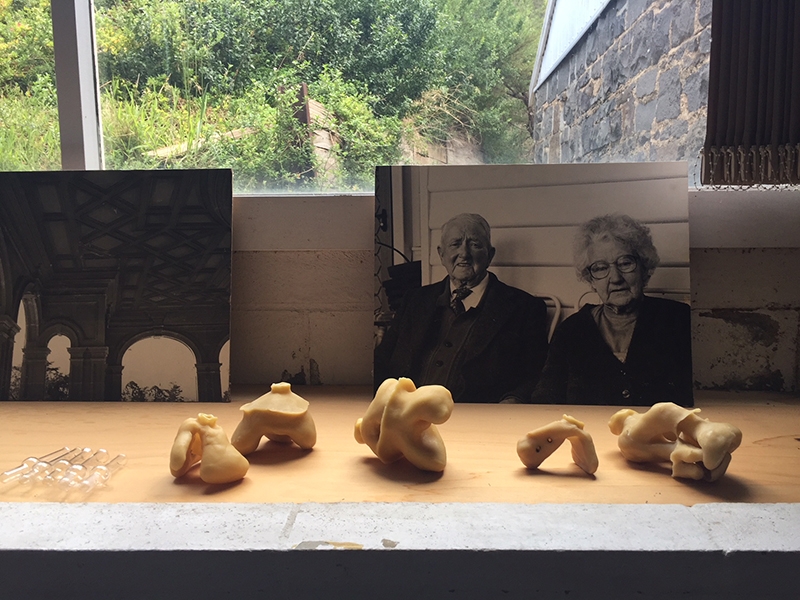
These visceral and bodily objects were displayed on a shelf in the Living Museum of the West for the recent exhibition Groundwork. Visitors were invited to pick up and smell the objects. They smelled strongly of beeswax. At the opening of this exhibition the sculptures were played by Woods (by blowing air through the different holes in the forms). Each object sounded differently, and at one point the drone of the engines of a plane flying overhead toned in harmony. After his performance, the objects were also offered as instruments for the audience to play.
For the 2017 group exhibition Visitors, Woods asked friends to use a mobile app that tracked their journey through a particular location. The reports of these routes, sent to the artist from various cities across the world, were used as a template to create soft wearable and jewelry-like sculptural forms that drape around and encircle the body, literally and metaphorically linking the body to other movements and other places outside of the wearer’s immediate experience.
%20and%20Bamboo%20material_2018_800x600px.jpg?itok=gdvgFOwO)
In addition to weaving fabric and making clothes from these materials, Woods also makes wearable jewelry works. These works sit in a direct relationship with other adaptive and sculptural forms, like hand-painted and bent timber forms used as hanging and performative objects. For the 2015 group exhibition Form and Flex, Woods, working with linking and layered material across a variety of forms and scales, created necklaces.
Following the bent sculptural forms, these necklaces were a process of touching and connection. Lens filter plastic touches and joins cord, cable insulation, string, bells, tube, cut, chipped and shaved timber, dowel, loops, and jump rings. In one work, aluminum tubing hangs from pink builders string in elegant oppositional balance with a piece of timber dowel. In another, a large, seamless blue ring is supported by two jump rings, circling and moving on the surface of the body when worn.

This collection also featured another carrier object, a compass ring, a simple, perhaps even rudimentary-looking jewelry object that, through the poetic gesture of wearing, sets the body always in relation to the Earth’s magnetic field.
These are multiform, multidimensional objects whose indirect and applied uses frame particular territories of operation: multifaceted, often subtle and tender. Each of these objects can be experienced and read, along with the context they are presented and amplified within. They function clearly in terms of Grosz’s explication of excess: excess as an overabundance, a proliferation of matter, life, and material for its own sake. Some might say that this type of making is what makes us human … but it’s also what makes us more and less than human, it’s what directly links us to matter, not an inert material but an order that makes something of and from the framing of territories, that sets us in relation to and forever connects us with the forces of chaos and the universe.
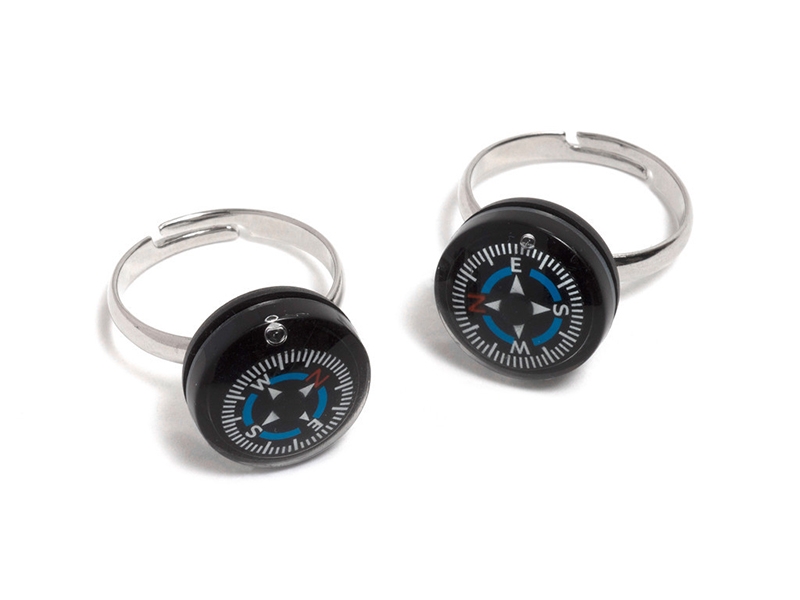
[1] Elizabeth Grosz, Chaos, Territory, Art : Deleuze and the Framing of the Earth (New York: Colombia University Press, 2008) 9.
[2] Here Grosz uses Darwin’s identification of specific biological imperatives along with Gilles Deleuze and Félix Guattari’s analysis of the unusual stage-making, dance, and song of the Australian Scenopoetes dentirostris, or tooth-billed bowerbird—described in What Is Philosophy?, trans. Hugh Tomlinson and Graham Burchell (New York: Columbia University Press, 1994) 184—along with her own observations in Chapter 1 of the “birdsong, the olfactory dance of insects, [and] the performative displays of vertebrates” (Chaos, Territory, Art, 10–12) as further examples of excessive, creative displays.
[3] Grosz’s essay, “Matter, Life and Other Variations,” published in Philosophy Today, v.55 (2011), describes the condition that allows for the harnessing of material and the creation of sensible and tangible objects and events. Grosz understands this condition as a “fullness of events,” a pre-individual totality or chaos. For Grosz, chaos is “the too much that forms of emergent order attempt to tame through the constitution of entities, processes, relations, and events.” Most importantly, she writes chaos is the “larger category, of which the philosophical concept of material is one component” (18).
[4] This ontological approach to material draws from a philosophical lineage that combines the scientific research of Charles Darwin (1809–1882), with the philosophical writings of Friedrich Nietzsche (1844–1900), Henri Bergson (1859–1941), Gilbert Simondon (1924–1989), and Gilles Deleuze (1925–1995) and Félix Guattari (1930–1992).
[5] But what if this framing is simply a privileging of a Euro-centric world-view? A prioritizing of continental philosophy over other knowledges that might frame creative activity in different ways? (Chaos, Territory, Art, 10).
